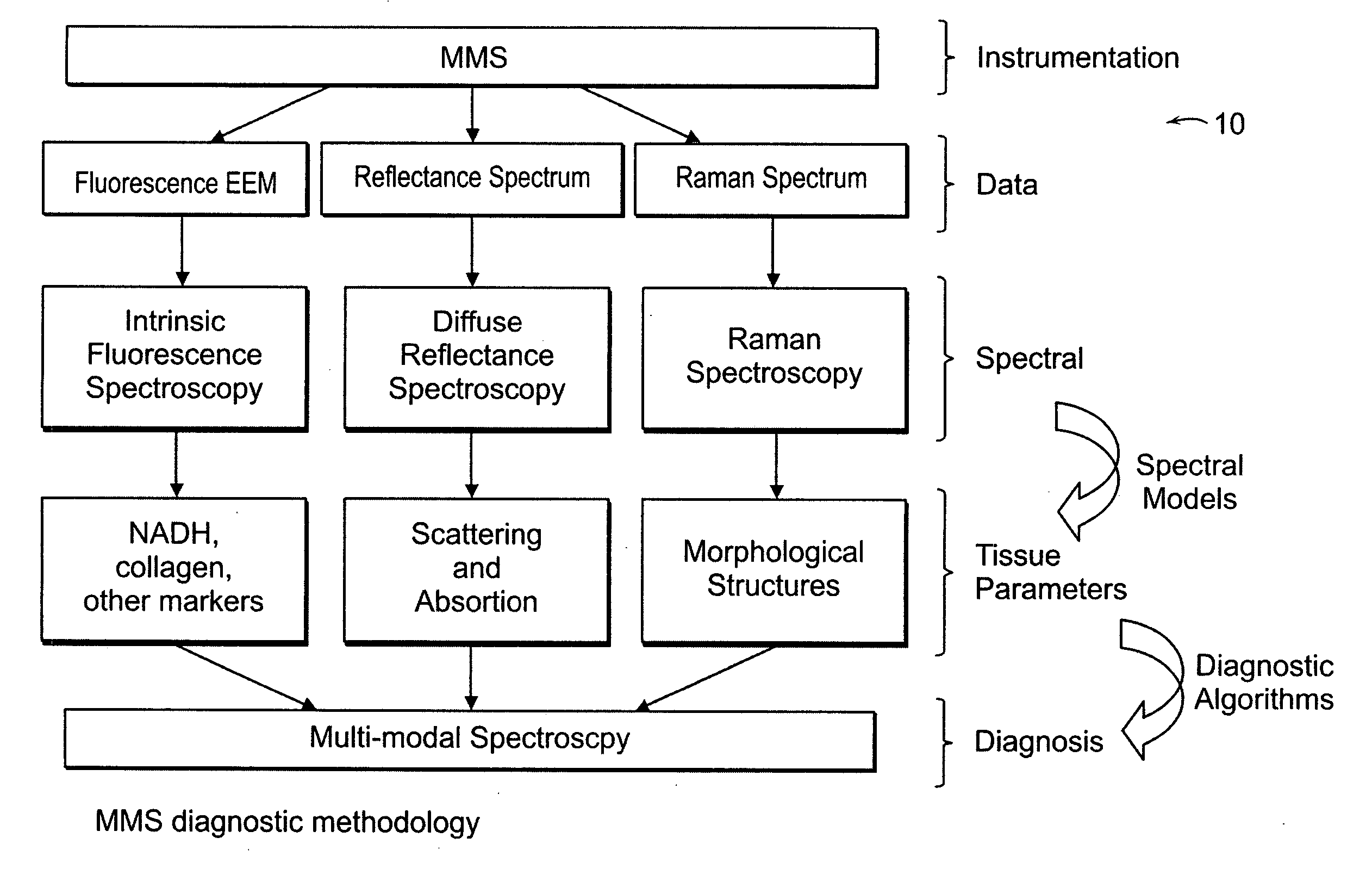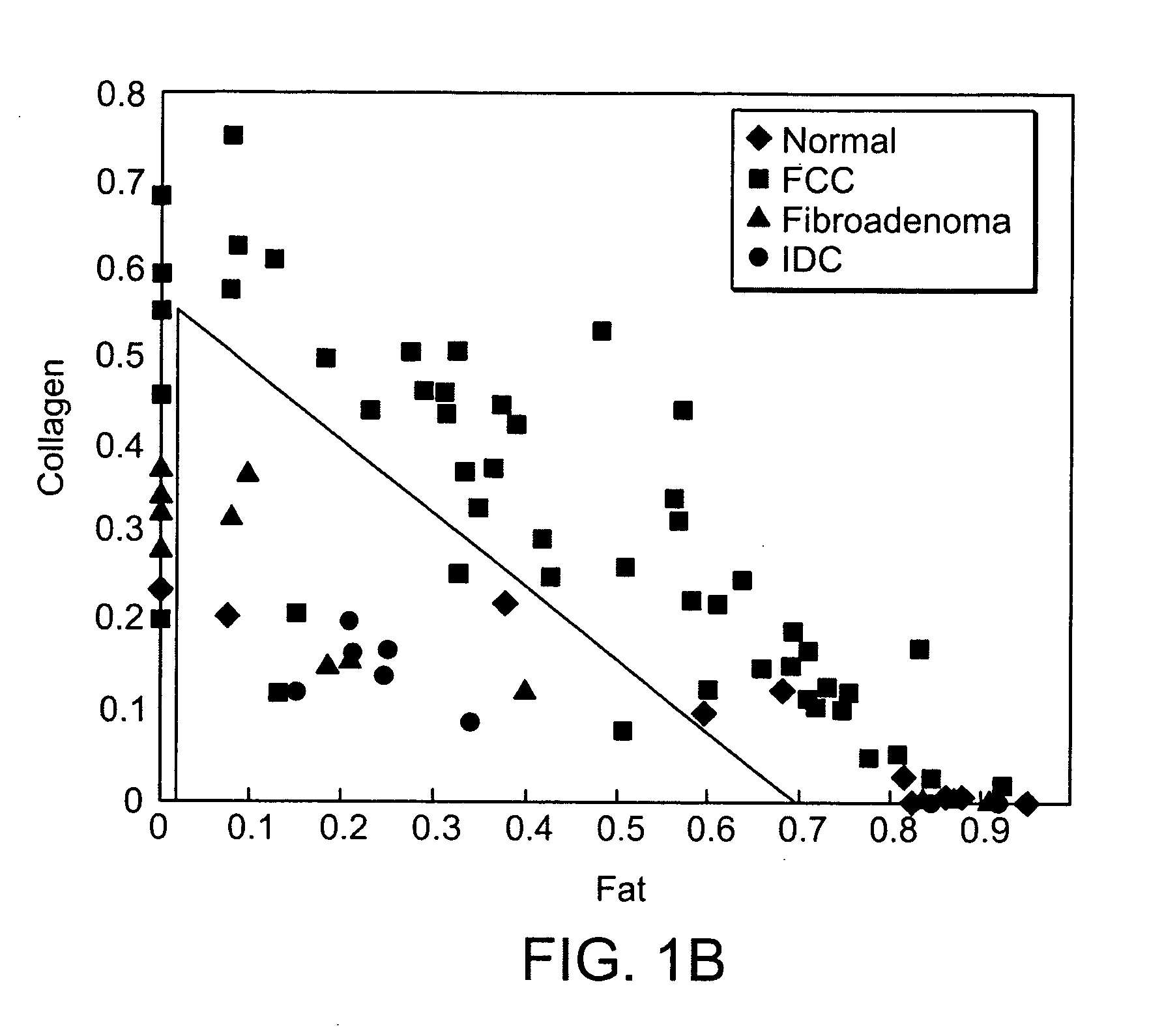Multi modal spectroscopy
- Summary
- Abstract
- Description
- Claims
- Application Information
AI Technical Summary
Benefits of technology
Problems solved by technology
Method used
Image
Examples
Embodiment Construction
[0038] An MMS system is generally illustrated in FIG. 1A. MMS measurements have been performed on surgical biopsies within 30 minutes of surgical resection. Most of the 30 minute time delay was due to inking and sectioning of the specimen performed as part of the routine pathology consultation performed on these specimens for more information on intra-operative margin assessment in breast cancer patients. IFS, diffuse reflectance and Raman spectra were obtained from a total of 223 spectra from 105 breast tissues from 25 patients. Specimens from patients with pre-operative chemotherapy or who underwent re-excisional biopsy were excluded. DRS and IFS spectra were collected using the FastEEM instrument, followed by collection of Raman spectra with a Raman instrument. Care was taken in placing the Raman probe at the same site on the tissue as the FastEEM probe. Once the spectra were acquired, the exact spot of probe placement was marked with colloidal ink for registration with histopath...
PUM
 Login to View More
Login to View More Abstract
Description
Claims
Application Information
 Login to View More
Login to View More - R&D
- Intellectual Property
- Life Sciences
- Materials
- Tech Scout
- Unparalleled Data Quality
- Higher Quality Content
- 60% Fewer Hallucinations
Browse by: Latest US Patents, China's latest patents, Technical Efficacy Thesaurus, Application Domain, Technology Topic, Popular Technical Reports.
© 2025 PatSnap. All rights reserved.Legal|Privacy policy|Modern Slavery Act Transparency Statement|Sitemap|About US| Contact US: help@patsnap.com



